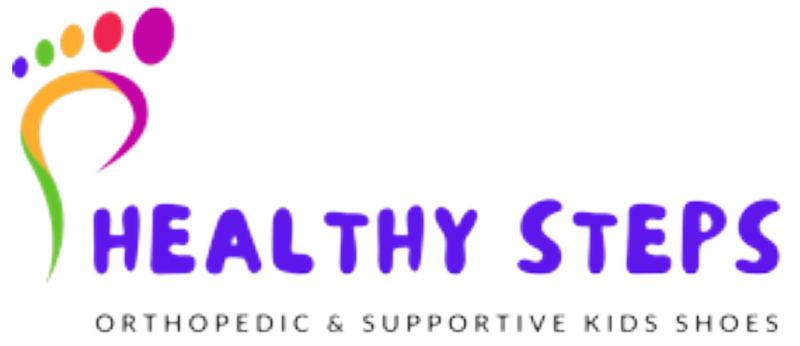Introduction:
Every parent wants to ensure their child grows up happy, healthy, and well-supported—starting from their very first steps. Footwear plays a critical role in a child’s physical development, affecting their balance, posture, and even motor skills. Selecting the right shoes can make all the difference as your child grows. In this comprehensive guide, we’ll cover what parents need to know about choosing shoes that support their child's development.
1. Prioritise Comfort and Flexibility
When children are learning to walk, their feet are still forming and need freedom to move and grow. Shoes with rigid soles can hinder their natural movement, making walking more difficult and less enjoyable.
Practical Tips:
- Opt for shoes with a soft, flexible sole that bends easily at the ball of the foot.
- Avoid overly stiff or narrow shoes; they should allow for free movement of the toes.
- Consider barefoot shoes or those designed to mimic the feel of walking barefoot, as they encourage natural foot movement and strength building.
Pro Parent Tip: Let your child walk barefoot at home when safe. Barefoot walking strengthens the muscles and tendons in their feet and improves their balance.
2. Focus on Proper Fit
Ill-fitting shoes can cause more than discomfort; they can lead to issues like blisters, toenail problems, or even long-term deformities such as bunions or hammertoes. It’s vital to ensure your child’s shoes fit correctly.
Practical Tips:
- Measure both of your child’s feet before buying new shoes, as one foot is often larger.
- There should be about a thumb’s width of space between the longest toe and the front of the shoe.
- The heel should fit snugly but not tightly, preventing slipping while allowing room for movement.
Warning Sign: If your child frequently pulls off their shoes or complains of pain, it’s time for a size check!
3. Breathability Matters
Kids' feet sweat twice as much as adults', so it’s important to choose materials that allow airflow. This prevents dampness, which can lead to odour and bacterial growth.
Best Materials for Breathability:
- Leather: Durable and breathable, it adapts to the shape of the foot.
- Mesh: Lightweight and great for airflow, keeping little feet cool.
- Avoid synthetic materials that trap moisture, leading to discomfort.
Pro Parent Tip: Invest in moisture-wicking socks to pair with breathable shoes to keep feet dry and odour-free.
4. Say No to Hand-Me-Downs
While it’s tempting to reuse shoes from an older sibling or cousin, hand-me-down shoes have likely already conformed to another child’s foot shape. This can lead to issues like misalignment and discomfort.
Why to Avoid Hand-Me-Downs:
- The previous wearer’s foot shape and walking pattern may have caused wear in specific areas.
- Shoes that have been used for a long period often lack the support and cushioning needed for proper development.
If you’re on a budget, consider buying gently-used shoes that appear nearly new or were only lightly worn.
5. Lightweight and Secure
Shoes that are too heavy or poorly secured can cause tripping hazards and discomfort. Children need shoes that won’t slow them down or come loose easily.
Recommendations:
- Choose lightweight materials such as foam, soft leather, or synthetic mesh.
- Fastenings like Velcro straps, elastic laces, or snaps are great for younger children, providing security while being easy to use.
Engagement Activity: Encourage your child to try on shoes and run around the shop to see how they feel.
6. Opt for Flexible Yet Sturdy Soles
The ideal sole offers protection while maintaining flexibility for natural movement. Soft soles are ideal for babies and toddlers taking their first steps, while older kids benefit from shoes with a bit more support.
Age-Specific Guidelines:
- Babies (0-1 year): Barefoot or soft, flexible sole for indoor crawling and walking.
- Toddlers (1-3 years): Flexible soles with a non-slip grip to help them balance.
- Preschoolers (4+ years): Slightly firmer soles for outdoor play and running.
Safety Tip: Always check the sole’s grip to prevent slipping.
7. Watch for Growth Spurts
Children’s feet grow rapidly, sometimes increasing by half a size in just a few months. Frequent checks are necessary to ensure their shoes aren’t too tight.
Growth Check Tips:
- Check the fit every 2-3 months for toddlers and every 3-4 months for older children.
- Keep an eye out for signs like red marks on the skin, unusual walking patterns, or complaints of discomfort.
Pro Parent Insight: Buying shoes with a small allowance for growth (around half a size) is ideal, but don’t go too large, as it can affect stability.
8. Consider Orthopedic Advice for Specific Concerns
If your child has flat feet, high arches, frequent tripping, or any noticeable gait issues, it’s worth consulting a specialist. Pediatric orthopedists and podiatrists can offer advice tailored to your child’s needs, possibly recommending custom insoles or specific footwear types.
Final Thoughts
Choosing the right shoes for your child is about more than just looking good; it’s about promoting healthy development and ensuring they’re ready to take on the world, step by step. As parents, your choices today lay the groundwork for strong, healthy feet tomorrow.
Engagement Tip for Parents:
Have any stories about your shoe-shopping adventures? Share your experiences below! Other parents would love to hear your tips or challenges. 😊👟 #HealthyFeet #HappyKids #ParentingJourney #HealthySteps

